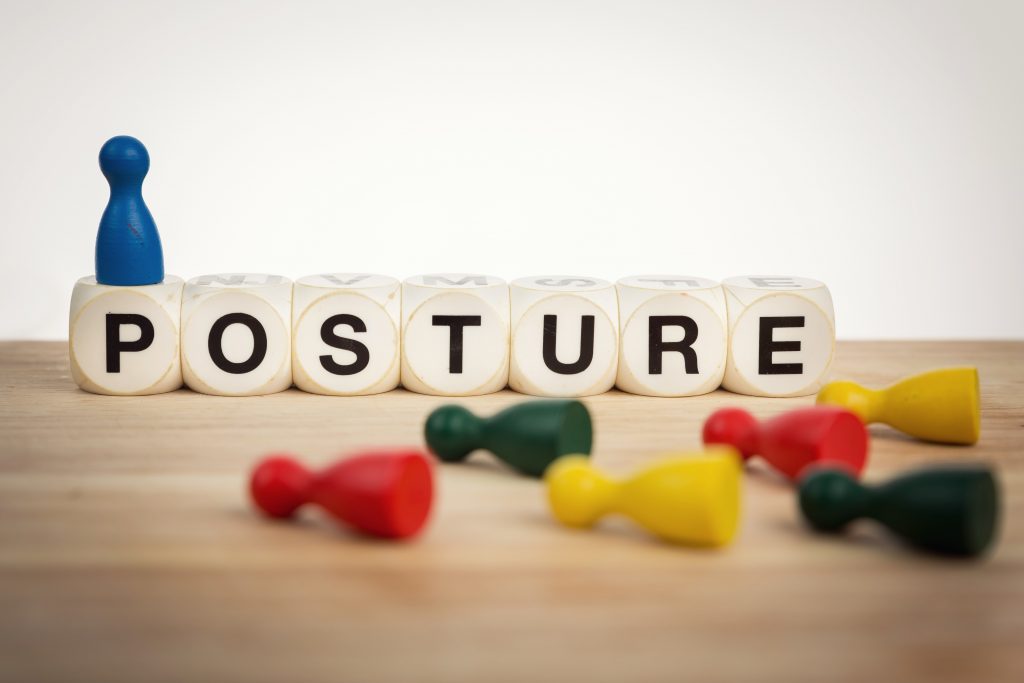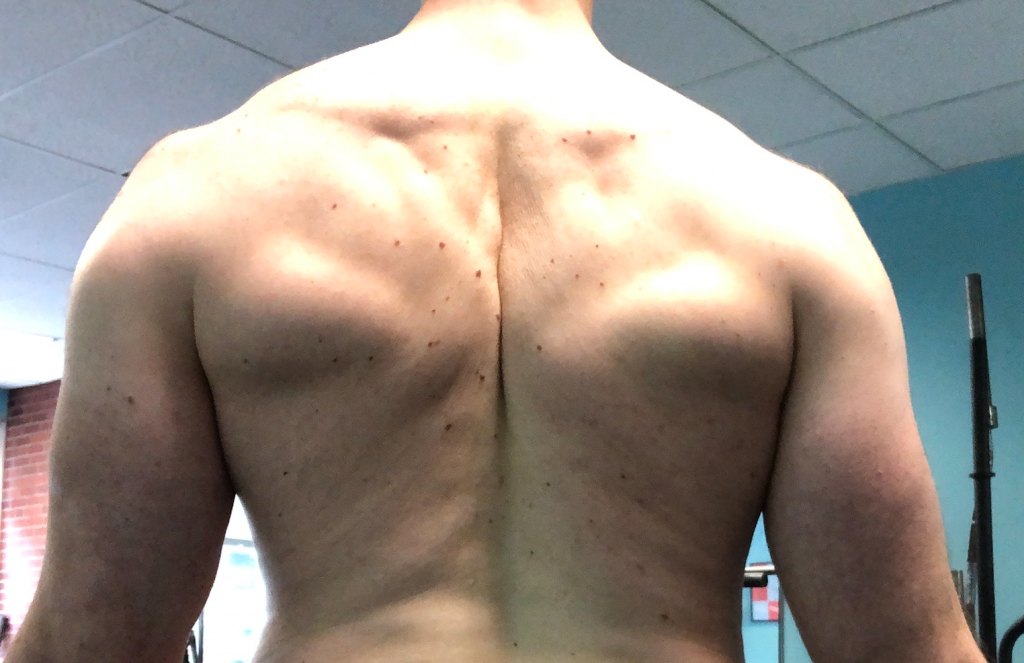Posture.
This is not an exhaustive blog on the topic.
It’s more like an amuse bouche or bite-sized commentary on a pet peeve of mine: Fitness professionals who place waaaaay too much emphasis on it (often times to the detriment of the client/athlete).
As well as a scenario where we might pay a little closer attention to it.
I like cheese.

Posture: It’s Just Information
Take a look at this picture.
What do you see?

I see two shoulder blades that are making out.
C’mon you two, get a room. Goddammit, I can’t take you anywhere.
The therapist or coach (or someone more mature) with a keen(er) eye may likely say something to the effect of:
- Overactive rhomboids (excessive scapular adduction/retraction).
- A more downwardly rotated scapular position (depression).
- An “interesting” shade of blue on the walls.
Now, to be clear: I am NOT someone who places a ton of credence on one’s static posture. While we’re getting better of late, I think the industry as a whole has gotten into a bad habit of placing all if its eggs into the posture basket…
…labeling people as dysfunctional the second we see forward head posture or a hair that’s out of place.
I’ve witnessed some coaches reaching for their “corrective exercise” bag of tricks before they’ve even seen the person they’re assessing do anything:
“Okay Mr. Smith, I notice you exhibit a slight kyphosis in your upper back, your right shoulder is a bit internally rotated, and it looks as if your left eyeball is lower than the right.
Weird.
But here’s the deal: You should purchase a 424 pack of training, and maybe, just maybe, after 62 weeks of dedicated corrective training where we dive deep into some transverse fascial line reactive neuromuscular breathing techniques we’ll be able to progress towards looking at a barbell.
I’m pumped. How about you?!”
This is not to short-change the importance of someone’s static posture and the information you can glean from it. Of course, if someone walks in with a lengthy injury history and it hurts to blink, then, yeah, it’ll have a bit more weight.
However, we can’t assume that just because a particular person presents with “y” – posturally speaking – that that automatically means “x.” I’ve seen some individuals walk in for their initial assessment with questionable (textbook) posture only to reveal the cleanest health history you’ve ever seen.
Zero injuries. Zero discomfort. Zero fucks to give.
Static posture is nothing more than information.
No one is a walking ball of fail because he or she presents a certain way.
Besides, we also need to respect that “good” or “bad” posture is relative to the load in addition to the task at hand. The latter point is especially cogent to the conversation because as my good friend Alex Kraszewski notes in presentation for The Trainers’ Toolbox:
“Posture/position will govern where motion is available from, as well as who much and where load is distributed. The task will dictate the appropriate range of posture available.”
How I want someone to “look” when attempting a challenging set of deadlifts is quite different compared to someone who’s just sitting there in front of me, sitting.
What’s more,
Anyway, back to the original picture above.
You forgot didn’t you?
Here, this one:

This is a very common theme or resting “presentation” amongst athletes – especially overhead athletes – as well as fitness professionals who 1) stand a lot during the day and 2) lift heavy things for a living.
Again, nothing is cemented as an absolute here, but if an individual walks in complaining of shoulder pain, and you ask him/her to take off their shirt (don’t be creepy about it) and their shoulder blades rest in a more retracted and downwardly rotated position, we can deduce that said individual (may, not always) need to work on more protraction to nudge them back to a more neutral position.
Neutral Scapular Position = Superior/inferior border of the scapulae rests between 2nd-7th thoracic vertebral levels, medial border is ~1-3″ from midline.

Photo Credit: MikeReinold.com
Someone “locked” in a more downwardly rotated position will almost always have a hard time achieving ample scapular UPWARD rotation (protraction is part of this equation), which is kind of a big deal for overall shoulder health & performance.
But don’t assume, you should check.
This is why it’s crucial to include both load AND movement in the initial assessment; sometimes scapular position will clean up on its own with minimal intervention.1
But let’s assume it doesn’t, and the person has been complaining of shoulder ouchies.
What then?
Here are a few drills I like to use and I offer for your consideration:
NOTE: I will say the bigger umbrella theme here is addressing ribcage/thorax position. The position of the shoulder blades are at the mercy of the T-spine.
1. Deadbug w/ Reach
I have a crush on deadbugs and their infinitesimal variations.
They’re a bonafide rockstar when it comes to improving anterior core strength and lumbo-pelvic control (which comes in mighty handedly when you’re working with someone who’s stuck in a more extended position).
Simply “reach” towards the ceiling as you extend your legs towards the floor and perform a FULL exhale with each repetition.
2. Deadbug w/ Loaded Reach
Same as the above, but now we add a smidge of load in the form of a med ball, kettlebell, dumbbell, a basket of He-Man figures, anything.
Sometimes adding a very slight load here can help clients/athletes “feel” the protraction more.
3. Quadruped Band Protraction – off Foam Roller
This is a drill I stole from my good friend and business partner, Dean Somerset.
He’s Canadian.
4. Forearm Wall Slides – off Foam Roller
1. You can blame my buddy Justin Kompf for the verticalness of this video.
Amateur hour.
2. This was/is a staple exercise from my days at Cressey Sports Performance. Start with a foam roller against the wall with your forearms against the foam roller. Protract (push away) from the foam roller and then slide up the wall making sure not to crank into your lower back and flair your rib cage.
Reset at the bottom.
Repeat.
It won’t take long for it to be Serratus O’clock.


